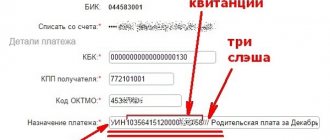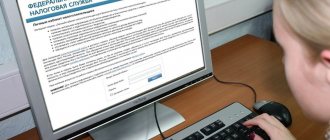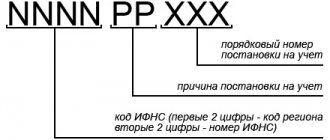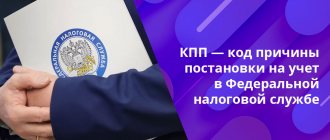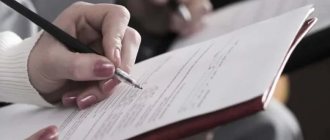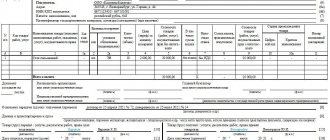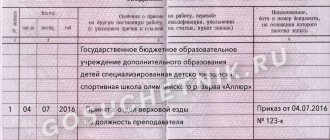OKPD2 replaced OKPD and became more expanded. Now it has 21 sections (instead of 17), which include 88 groups of goods, works and services. Each item has its own numerical code: from winter wheat (01.11.11.110) to services provided by the United Nations (99.00.10).
OKPD2 is used in government procurement, so both customers and suppliers need to understand this topic. For incorrect indication of OKPD2, the customer faces an administrative fine of up to 50,000 rubles. We talk about this and much more in a new article.
OKPD2: what is it?
OKPD is an abbreviation that should be deciphered as “All-Russian Classifier of Products by Type of Economic Activities.” OKPD2 collects and systematizes goods, works and services. Each position has its own code by which the product can be identified. All items are ranked according to the standardization system. Our country uses the classification adopted by the Eurasian Economic Union (EAEU).
The code designation of goods, works or services is used, for example, in statistics and lawmaking. In the field of government procurement, it is also customary to use this “code”, by which you can find the goods intended for delivery. Both customers and suppliers should navigate OKPD2.
To the customer:
- To create a purchase identification code. The number series consists of 36 digits and includes part of the OKPD2 code (30-33 digits). For example, if the subject of purchase is ready-made feed for animals, it will include the first four digits of OKPD2 - 10.09.
- To prepare procurement documentation (for example, schedule).
- To post information in the Unified Information System (UIS).
To the participant:
- To know in which group his product is located, and, therefore, whether the customer needs his product specifically.
The Russian government establishes restrictions and benefits for certain categories of suppliers or certain goods or services. Legislative regulations list OKPD2 codes that guide customers. For example, Government Decree No. 102 of 02/05/2015 provides a list of medical products that are subject to restrictions.
How does OKPD differ from OKPD 2?
In total, in the history of modern Russia, three options for classifying products by type of economic activity were consistently used:
- OKP , that is, simply the All-Russian Classifier of Products. It has been developed since 1991 by several practically independent government agencies on behalf of the Russian Government. Approved by the State Standard of the Russian Federation at the end of 1993; came into force the following year. Not related to European requirements for the classification of goods, works and services; consists of six significant characters (the first two, indicating the class, are separated by a space) and a final check digit to verify that the code is assigned correctly. Thanks to the use of a hierarchical structure, the code can accurately determine which type of product it belongs to. The all-Russian OKP classifier has been completely phased out, according to the Rosstat Order of 2014, starting in 2022.
- OKPD . Appeared in 2008 (initially as an addition to the main OKP classifier). The first of the domestic systems brought into compliance with European standards (at that time it was still the CPEC of 2002). Approved by Rostekhregulirovaniya Order No. 329 at the end of 2007; came into force the following year. It included only 17 sections (four less than in the current edition), but almost 40 thousand groups versus the currently used 18 thousand. Formally withdrawn from use in accordance with the above-mentioned order since 2022, but for a number of reasons given below it is still in use.
- OKPD 2 . Came at the beginning of 2015 to replace OKP and OKPD at the same time. Very much in line with the European CPA 2008 system, except for the use of 7-9 character codes instead of the EU six digits separated by periods. Typically, OKPD 2 codes are in agreement with OKVED 2 codes, but there are also obvious discrepancies that no one is currently going to eliminate. Officially, OKPD 2 has been the only used classifier of products manufactured in Russia since the beginning of 2017.
Important : in accordance with Order of the Federal State Statistics Service No. 14 of 2014, individual entrepreneurs and owners of large commercial structures must use in their work (starting from 2015) exclusively codes according to the All-Russian Classifier OKPD 2. However, sometimes, to make it easier to understand, it makes sense to include documents also contain old codes - if, of course, the company was registered before 2015. Otherwise, OKPD or OKP simply could not be assigned to it, and therefore the merchant would have nothing to choose from.
It also makes sense, when drawing up an act or agreement, if there are several codes, each time indicate in brackets after them the affiliation: OKP, OKPD or OKPD 2. Although, by decision of the legislator, the first two classifiers have already been withdrawn from circulation, there is no punishment for the fact that they (of course , together with the new code) will be given in the document, not provided.
See also: Sample of filling out a travel certificate and form
OKPD code: how to “read” correctly?
The OKPD code can consist of 2 to 9 digits and has a step structure. The more characters in the “cipher”, the more accurately the product name can be determined. The maximum number of characters in the European classification is 6, in the Russian economy there are 9. Let’s look at a specific example:
| Decoding | Example | ||
| 00 | Class | 24 | Basic metals |
| 00.0 | Subclass | 24.1 | Iron, cast iron, steel and ferroalloys |
| 00.00 | Group | 24.10 | Iron, cast iron, steel and ferroalloys |
| 00.00.0 | Subgroup | 24.10.1 | Basic iron and steel products |
| 00.00.00 | View | 24.10.11 | Mirror and pig iron in ingots, ingots or other primary forms |
| 00.00.00.00 | Category | ———- | ———- |
| 00.00.00.000 | Subcategory | 24.10.11.122 | Pig iron for foundry production |
In the example from the table, we reached a 9-digit number, but the category is not always divided into subcategories. In such cases, instead of the last digit, 0 is written. For example, 10.24.11.110 - “Mirror cast iron in ingots, blanks or other primary forms.”
Some products are not divided into categories, then the last three digits will be zero. For example, 02.10.30.000 – “Forest trees”.
Classifier structure
As already mentioned, the All-Russian Classifier of Products, Works and Services OKPD 2, developed and approved in the Russian Federation, is brought into line with the European classification CPA 2008 (Statistical classification of products by type of activity in the European Economic Community - CPEC, or CPA 2008).
See also: Where can I get Sberbank card details?
In most cases, the Russian developer, the Ministry of Economic Development, for the purpose of maximum compliance, left the two- to six-digit CPA 2008 codes unchanged, but sometimes, taking into account the peculiarities of the development and functioning of the domestic economy, “extended” seven-, eight- and nine-digit codes. The Russian Federation is no exception in this matter: a similar practice is common in a number of countries of the European Union, as well as in states that are applicants to join it.
As you can see, OKPD 2 contains a huge amount of information, completely excluding the possibility of simple sequential classification. On the other hand, too complex a breakdown into subcategories would lead to new problems and inevitable confusion, threatening not only economic but also reputational losses. Therefore, when developing the classification, it was decided, as before, to use both methods: sequential and hierarchical. The types of products produced or services provided are listed sequentially, and the subtypes (subcategories) are listed in a “deepening”, hierarchical order.
The structure of the classifier in general consists of:
- 00 - classes (the most general category);
- 00.0 - subclasses;
- 00.00 - groups of goods, works or services;
- 00.00.0 - subgroups;
- 00.00.00 - types of products offered by the entrepreneur (this is where the pan-European classification ends);
- 00.00.00.00 - categories (in the Russian system);
- 00.00.00.000 - subcategories (in the Russian classifier).
As you can see, the number of digits in OKPD 2 of an organization can range from two to six (within the CPA) or up to nine (taking into account the specifics of the domestic economy).
Important : to maintain compliance of the codes used according to the OKPD 2 and KPES 2008 classifiers, as well as to improve perception, the following are separated by a dot:
- second and third characters of the code;
- fourth and fifth digits of the classifier;
- in the Russian version - the sixth and seventh characters (the ninth, if there is one, is written together with the seventh and eighth).
In addition, it is currently customary in codes that comply with European standards (that is, including no more than six characters) to use all nine digits, replacing the last three with zeros. If the product or service has Russian specifics, the final three characters (or only the seventh and eighth) differ from zero.
See also: SWOT analysis of an enterprise - example
Example of product classification using OKPD 2:
- 05. General class name: "Coal".
- 05.2. Subclass name: “Brown coal (lignite).”
- 05.20. Product group name: “Brown coal (lignite).”
- 05.20.1. Subgroup name: “Brown coal (lignite).”
- 05.20.10. Product type name: “Brown coal (lignite).”
- 05.20.10.110. The name of the first subcategory provided by the regulator: “Run brown coal (lignite).”
- 05.20.10.120. Name of the second subcategory: “Enriched brown coal (lignite).”
- 05.20.10.130. The name of the third subcategory: “Brown coal (lignite) concentrate.”
In order to prevent possible misunderstandings, the developer of OKPD 2 has provided explanations for categories and subcategories included in the name, which serve to:
- precise, leaving no room for ambiguous interpretation of the understanding of isolated terms, abbreviations or phrases within the general name;
- creating an unambiguous concept about the specifics of the production, provision and use of goods and services included in a given category or subcategory;
- providing the reader with an exhaustive or broadly interpretable list of products included in a category or subcategory or work performed;
- prevention of intentional or accidental inclusion in the described category (subcategory) of goods or services not provided for by the compiler (for example, mixing shale and anthracite coal).
For “European” (up to six characters) codes, explanations for classes, subclasses, and so on in descending order of goods and services usually correspond to those adopted in the European Union and are not given in the directory (or are given partially) or, if there are significant discrepancies, are included directly in the classification.
Important : in accordance with the logical principle of constructing hierarchical lists, a comment relating to a more “general” group fully applies to its subgroups. Therefore, when trying to independently find your code using the All-Russian Classifier, an entrepreneur must take into account the notes related to “superior” categories.
For example, in domestic practice, instead of the European standard CPA 2008, the following are used :
- for subclass 10.4 (“Vegetable and animal oils and fats”) - Technical Regulations TR TS-024/2011 of the Customs Union concerning relevant products;
- for subclass 10.5 (“Milk, dairy products”) - Federal Law (Technical Regulations) No. 88-FZ, approved in June 2008;
- for subclass 10.32 (“Juices from vegetables and fruits”) - Technical Regulations CU TR-023/2011 of the Customs Union;
- for all drugs included in the OKPD - ATC (Anatomical Therapeutic Chemical) classification system and so on.
When using unified codes, they are not used, but the most general letter designations of the sections of the classifier are included in all online and offline directories. They have no practical significance and rather serve to understand the structure of the system itself:
- Section A. It includes agricultural products, animal products from fisheries and forestry.
- Section B - all products related to the mining industry.
- Section C - goods offered by manufacturing enterprises.
- Section D - gas, steam, electrical energy and air conditioning services.
- Section E - works on water supply and drainage, as well as reclamation services.
- Section F - all types of construction work.
- Section G - services related to retail and wholesale commercial activities; and also with the repair of motor vehicles (cars, trucks and motorcycles).
- Section H - work on organizing transport transportation and warehouse activities.
- Section I - services in the field of hospitality and catering.
- Section J - services provided in the field of communications (including cellular), processing and transmission of information.
- Section K - services of financial (including investment) companies and insurance agencies.
- Section L is the entire range of services to ensure the interests of clients in the field of real estate.
- Section M - works related to engineering, technical, professional and scientific (not applied) fields.
- Section N - administrative, economic, organizational (in a general sense) and support services.
- Section O is a set of government services for social insurance (its obligatory part), administration and military support.
- Section P - services provided by government or commercial entities in the field of education.
- Section Q - services provided in the field of health protection and social protection of citizens.
- Section R is a set of services in the field of entertainment, cultural events, recreation, sports (in its entertainment part) and art.
- Section S - other services provided to citizens, including the activities of public organizations.
- Section T - goods, works and services produced and provided at home and for one’s own use.
- Section U - services provided to consumers by extraterritorial structures.
Advice : although letter designations are not officially used when using OKPD 2 codes, since they represent unnecessary information, it is recommended that an individual entrepreneur or owner of a legal entity, when mentioning the code in the text of the document, add the corresponding name in brackets after it - this will allow the counterparty to quickly check the data provided according to the reference book.
Why is it important to choose the right OKPD2 code?
It happens that customers make mistakes when indicating OKPD2 in the procurement documentation. The Ministry of Economic Development of the Russian Federation, in its Letter No. D28i-344 dated February 17, 2016, reports that the customer does not bear administrative responsibility for an incorrect product code. But in the same Letter, the Ministry reminds that the supervisory authority in the field of government procurement is the FAS.
If it is proven that an error in the OKPD2 instructions led to a restriction of competition and the choice of an incorrect procurement method, the customer will be found guilty and penalties will be applied to him. Thus, for asserting an incorrect method of determining the executor, a fine will be imposed on the official:
- in competitive procurement – 30 thousand rubles. (Clause 1 of Article 7.29 of the Code of Administrative Offenses of the Russian Federation);
- in purchases from a single supplier - 50 thousand rubles. (Clause 2 of Article 7.29 of the Code of Administrative Offenses of the Russian Federation).
Knowing the OKPD2 code of its products will help the supplier to correctly set up filters when searching for purchases (for example, in the Unified Information System), and he will also know what restrictions and advantages apply to his product.
Where to look for OKPD2?
The “codes” of goods, works or services are given by Rosstandart in its Order No. 14-Art dated January 31, 2014. You can also find products on various resources by entering the name of interest. The Kontur.Snab service can help in this matter. To do this, enter the name you are looking for in the search bar, for example, “sugar beets”:
It happens that suppliers find it difficult to select OKPD2, for example, if a product or service by name matches several points of the classifier. To determine the exact code, you need to know the description of the product, its composition, and the type of activity of the manufacturer. In some cases, the documentation for the product helps, and sometimes for help you need to turn to professionals who will establish the exact OKPD2 with the help of expertise.
